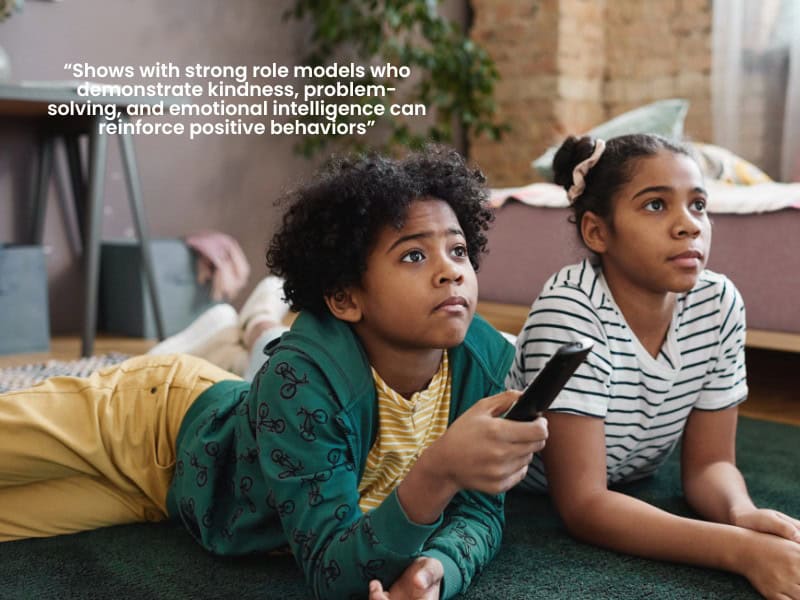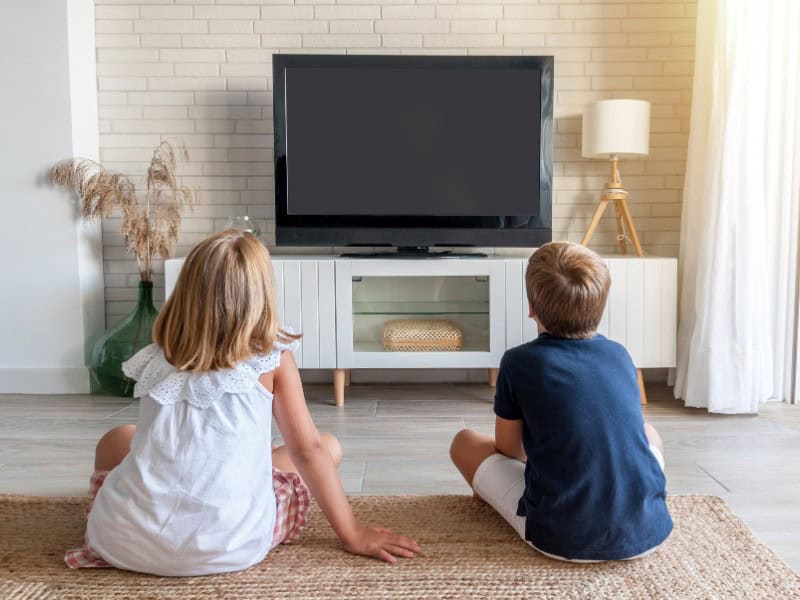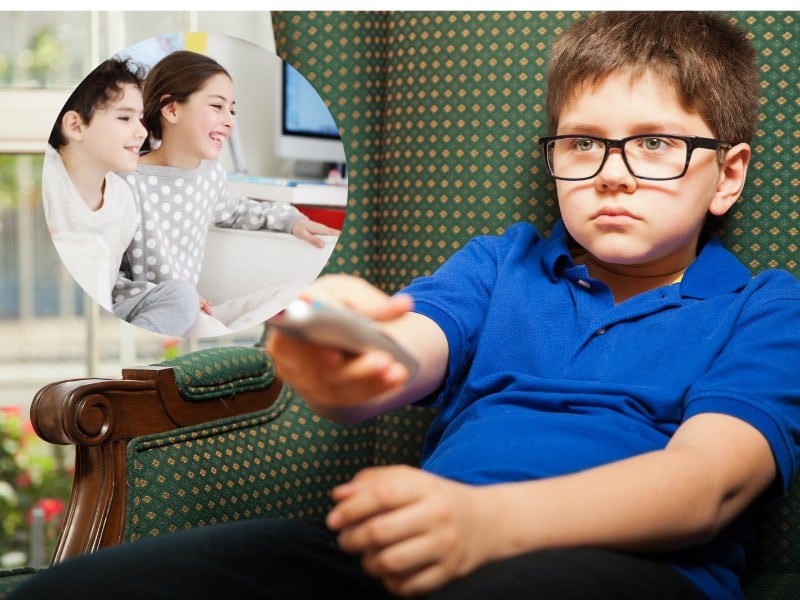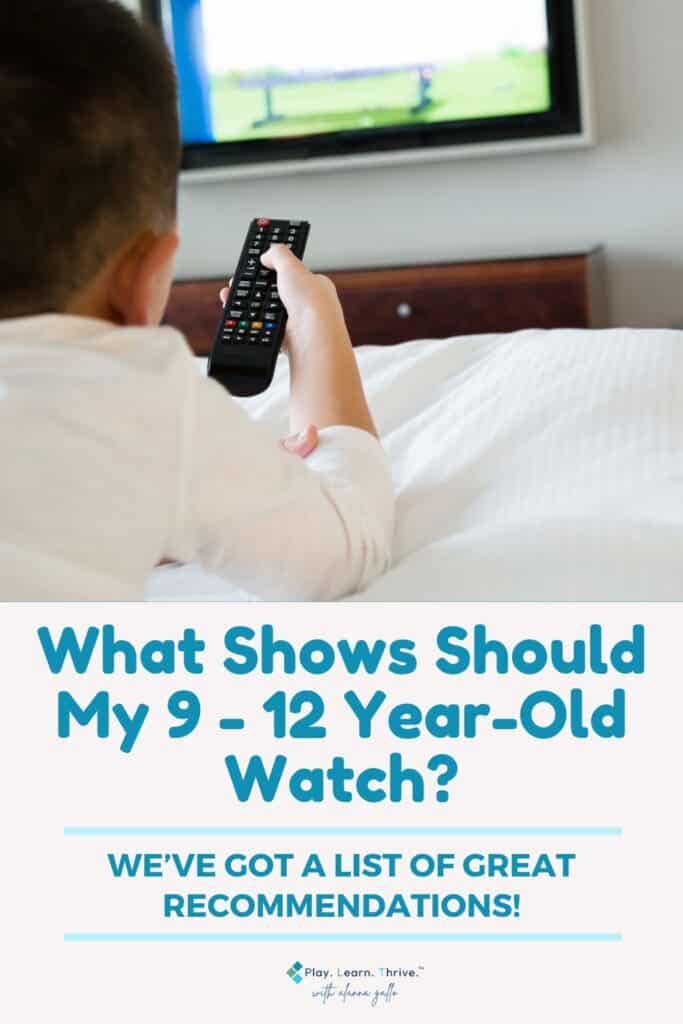The Best Age-Appropriate TV Shows for 9-12 Year Olds: A Parent’s Guide
What should your kids be watching? It's something many parents worry about! Take a look at the best age-appropriate shows for 9-12 year olds, filled with engaging content, positive messaging and learning.

Play. Learn. Thrive.™ only endorses products we authentically love and use. Some of the product links in this post may be affiliate links. That means that if you click them and make a purchase, this site makes a commission. Play. Learn. Thrive.™ is also an Amazon Associate. As an Amazon Associate, we earn from qualifying purchases. It will have no impact on the price you pay or the experience of your purchase.
Welcome back to Play. Learn. Thrive. – a website where we focus on helping parents raise confident, lifelong learners. I’m Alanna Gallo, a former teacher with a master’s in education who saw firsthand how kids were losing confidence, independence, and their natural love of learning.

I left the classroom to help parents raise curious, capable, and screen-conscious kids in a world that doesn’t make it easy. My work has been featured in major media outlets, and I’m here to give you real, research-backed advice—without the guilt trips or unrealistic expectations.
Finding the right TV shows for kids in the 9-12 age range can feel like a challenge. At this stage, kids are developing their own opinions, expanding their interests, and craving more engaging content—while still needing age-appropriate themes.
The good news? There are plenty of great shows that balance entertainment with positive messages, creativity, and learning.

Why Choosing the Right TV Shows Matters
Not all screen time is created equal, and the TV shows our children watch can have a lasting impact on their development, behavior, and worldview. At ages 9-12, kids are at a pivotal stage where they are developing their own opinions, learning how to navigate social situations, and absorbing messages that shape their values. The content they consume during this time can either support their growth or introduce ideas they may not be ready to process.
Here’s why being intentional about their TV choices matters:
- Shaping Values and Behavior – Children often mimic what they see on screen. Shows with strong role models who demonstrate kindness, problem-solving, and emotional intelligence can reinforce positive behaviors, while content that normalizes aggression, dishonesty, or poor communication may encourage unhealthy habits.
- Emotional and Social Development – At this age, kids are navigating friendships, self-identity, and increased independence. Thoughtfully chosen shows can provide valuable lessons on empathy, resilience, and conflict resolution by presenting relatable scenarios that help them process real-life challenges.
- Encouraging Critical Thinking – Well-written shows can spark curiosity, creativity, and critical thinking skills. Whether it's a mystery show that encourages problem-solving, a science program that fuels curiosity, or a historical drama that brings past events to life, TV can be a powerful learning tool when used thoughtfully.
- Balancing Entertainment and Learning – While kids should be able to enjoy fun, lighthearted content, it's beneficial to balance it with shows that introduce them to new concepts, perspectives, and ways of thinking. Educational programs can reinforce what they learn in school, while high-quality storytelling can teach life lessons in an engaging way.
- Protecting Their Well-Being – Some shows contain themes or situations that may be too intense or mature for younger kids. Violence, complex romantic relationships, and heavy emotional themes can be overwhelming or confusing. Choosing age-appropriate content ensures kids can engage with media in a way that supports their emotional well-being rather than causing unnecessary stress or fear.
By being intentional about the shows your child watches, you can ensure that their screen time is a valuable, enriching experience rather than just passive entertainment.

What to Look for in a TV Show for 9-12 Year Olds
With so many TV options available, how do you decide what’s best for your child? Here are key factors to consider:
1. Positive Themes and Messages
Look for shows that promote values like kindness, perseverance, teamwork, and problem-solving. Shows that encourage curiosity, empathy, and emotional resilience can be more beneficial than those that focus solely on humor or action without meaningful takeaways.
Example: Wild Kratts teaches kids about wildlife conservation and science while keeping them engaged with exciting adventures.
2. Complexity and Engagement
Kids in this age group can handle more intricate storylines, but content should still be engaging and age-appropriate. A well-paced show should balance excitement with digestible lessons and avoid overly mature or complex themes.
Example: Dragons: Race to the Edge is an adventurous series with action-packed storylines but also reinforces teamwork, problem-solving, and responsibility.
3. Representation and Diversity
Children benefit from seeing a variety of characters with different backgrounds, cultures, and experiences. Shows that embrace diversity help foster inclusivity and provide kids with a broader understanding of the world.
Example: Carmen Sandiego introduces children to different cultures and global adventures, teaching history and geography in an engaging way.

4. Balance Between Fun and Educational Content
While not every show needs to be explicitly educational, it’s great to choose a mix of entertainment and learning. Some shows weave learning naturally into their storytelling, while others may just provide great role models.
Example: The Who Was? Show takes a comedic approach to history, making it engaging while also educational.
5. Appropriate Humor and Social Lessons
Comedy is a great way for kids to unwind, but it’s important to ensure the humor is age-appropriate and not rooted in negative behaviors like bullying, sarcasm, or crude jokes. Shows that teach kids about friendship, peer relationships, and respect can be great choices.
Example: The InBESTigators is a lighthearted, funny mystery show that also teaches critical thinking and teamwork.
When evaluating a show, you might also consider:
✔ Does it align with your family’s values?
✔ Does it portray positive relationships and interactions?
✔ Is the content age-appropriate without being too intense?
✔ Does it encourage curiosity or introduce new ideas?
Using these guidelines, you can make informed choices about the best TV shows for your child.
Finding Age-Appropriate TV Shows for 9-12 Year Olds
When it comes to selecting the best TV shows for 9-12-year-olds, it's tough to give specific recommendations as all families have their own needs. Some of our current favorites for this age are:
Grizzy and the Lemmings
A slapstick animated comedy featuring Grizzy, a big bear who believes he's the king of the forest, and a group of mischievous lemmings who constantly disrupt his peaceful life. The show is action-packed and humorous, making it entertaining for kids. While it contains plenty of cartoonish physical comedy, it remains lighthearted and fun.
Where to Watch: Netflix, Boomerang, Cartoon Network
Best for: Kids who enjoy fast-paced, non-verbal humor with classic chase sequences.
Wild Kratts
This educational adventure series follows Chris and Martin Kratt as they use special suits to gain animal abilities and embark on exciting wildlife expeditions. Each episode teaches kids about different species and ecosystems while incorporating action-packed storylines. The mix of animation and live-action segments makes learning about nature fun and engaging.
Where to Watch: PBS Kids, Prime Video
Best for: Young nature lovers and kids interested in animals, science, and adventure.
Dragons: Race to the Edge (How to Train Your Dragon)
Set between How to Train Your Dragon 1 & 2, this animated series follows Hiccup, Toothless, and their friends as they explore uncharted territories and face new dragon-related challenges. The show balances action, adventure, humor, and friendship while expanding the world of Berk. It features themes of teamwork, problem-solving, and leadership.
Where to Watch: Netflix
Best for: Fans of the How to Train Your Dragon movies and kids who enjoy epic fantasy adventures with strong character development.

We always refer back to Common Sense Media as a starting place before allowing our children to watch a show. You can find a list of their Best TV Shows for Tweens here. That said, I usually go down one age group because I find the shows recommended to be better for the higher end of the age range given by Common Sense.
Parental Controls and Monitoring TV Viewing for Children
With so many TV options available, parental controls can help ensure children watch age-appropriate content. Most streaming platforms offer built-in restrictions, allowing parents to filter content based on ratings and create a safer viewing environment.
Beyond controls, actively monitoring what kids watch opens the door for meaningful conversations. Discussing their favorite shows helps parents understand their interests, clarify any confusing themes, and reinforce positive messages.
Setting clear screen time limits is also key to maintaining balance. Encouraging a mix of TV, outdoor play, reading, and family time helps children develop healthy media habits while still enjoying entertainment in moderation.
Make sure you familiarize yourself with the general TV ratings below.

TV Ratings Guide
To help you navigate age recommendations, here’s an overview of standard TV ratings:
- TV-Y – Suitable for all ages, including young children (2-6)
- TV-Y7 – Recommended for ages 7 and up
- TV-G – General audiences; not specifically for children but generally appropriate
- TV-PG – May contain material unsuitable for younger children
- TV-14 – Not recommended for children under 14
- TV-MA – Mature audiences only (equivalent to an R rating)
Additionally, you may see these descriptions used:
- D – Sexual or suggestive dialogue
- L – Coarse or crude language
- S – Sexual situations
- V – Violence
- FV – Fantasy violence (specific to TV-Y7 content)
The Impact of Excessive Screen Time on Children
Too much screen time can take a toll on children's physical, emotional, and social well-being. Studies link excessive screen use to health issues like obesity and sleep disturbances, as it often replaces physical activity essential for growth and development.
Beyond physical health, prolonged screen exposure can contribute to anxiety, depression, and social isolation. When kids spend more time in front of screens than engaging with family and peers, they miss crucial opportunities to build social skills and real-world connections.
The type of content matters, too—exposure to violent or negative media can shape a child’s worldview and emotional resilience. Encouraging a balanced approach, with age-appropriate and positive content, helps children develop healthier habits while still enjoying the benefits of screen time in moderation.
It's Time to Put Screen Time on Pause

50 Simple Screen-Free Learning Activities for Curious Kids
These 50 hands-on activities help children develop problem-solving skills, creativity, and real-world knowledge—without needing a screen. Designed to encourage self-directed play, hands-on discovery, and deep learning, this guide gives you a simple way to turn everyday moments into powerful learning opportunities.
Encouraging Healthy TV Habits
Even with great TV options, it’s important to ensure that screen time is balanced with other activities. Here are some ways to encourage a healthy relationship with TV:
1. Set Clear Screen Time Limits
TV can be enjoyable, but too much screen time can interfere with sleep, physical activity, and real-world social interactions. Establishing boundaries—like limiting TV to certain times of day or specific durations—helps kids develop healthy habits.
Tip: Set a rule like “One episode after homework and outdoor play” to encourage balance.
2. Watch Together When Possible
Co-viewing can be a great way to engage with your child, spark conversations, and better understand what they’re consuming. Watching together also allows you to discuss any themes or messages that might come up.
Tip: Ask open-ended questions after an episode, such as:
- “What did you think of that character's decision?”
- “What would you have done differently?”
- “Did you learn anything new from this episode?”

3. Encourage Active Engagement
Rather than just passively watching, encourage your child to think critically about what they’re seeing. If a show presents a moral dilemma, discuss it. If it's an educational show, challenge them to research more about the topic.
Tip: If they love Wild Kratts, take it further by visiting a local nature center or zoo to learn more about wildlife.
4. Promote Variety in Activities
TV should complement, not replace, other activities. Encourage kids to mix in reading, outdoor play, creative hobbies, and hands-on learning experiences.
Tip: Designate “Screen-Free Evenings” once a week where the family plays board games, goes on a walk, or reads together instead of watching TV.
5. Use Parental Controls When Needed
Most streaming platforms allow parents to set content restrictions based on age ratings. These tools can help ensure that kids don’t accidentally watch something that’s too mature for them.
Tip: Set up child-friendly profiles on Netflix, Prime Video, and Disney+ to filter content based on appropriate age levels.
6. Model Healthy Screen Use
Kids learn habits from their parents. If they see you being mindful about screen time—choosing quality content, watching in moderation, and engaging in other activities—they’ll be more likely to do the same.
Tip: Avoid having the TV on in the background all the time, and prioritize screen-free family meals.
Did you enjoy these tips? Don't forget to check out our “Slow TV Shows” recommendations! Also, be sure to subscribe to my newsletter for more resources on raising confident, lifelong learners, and follow me on Instagram for a deeper dive in day-to-day parenting! Can't wait for you to join me!







